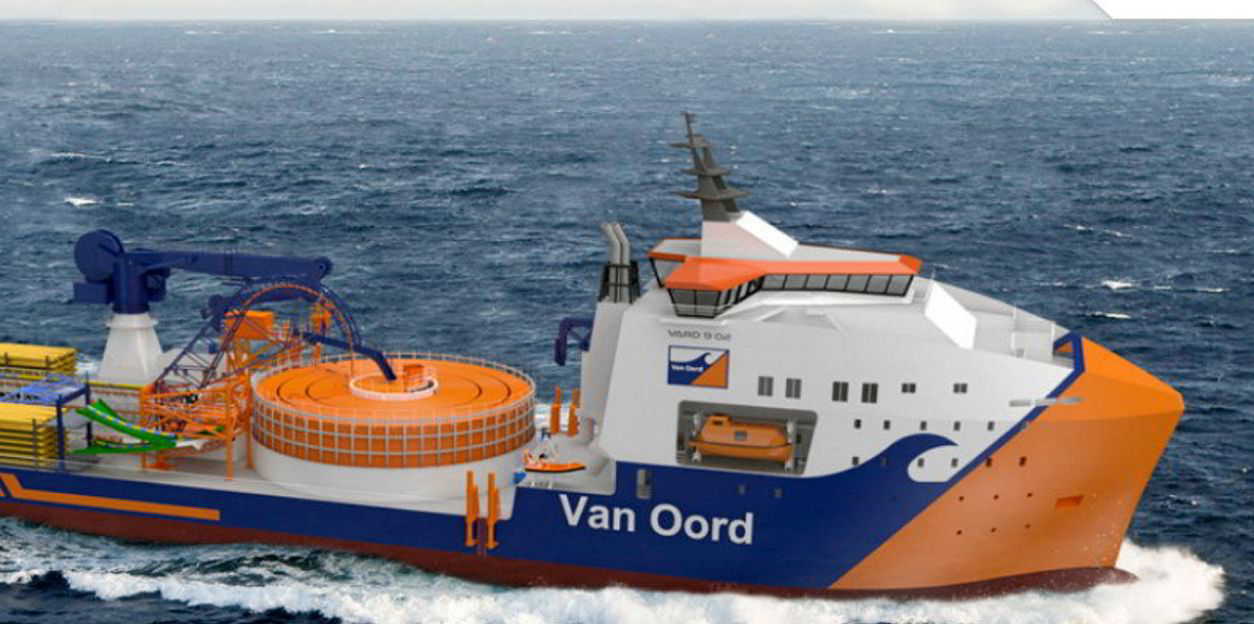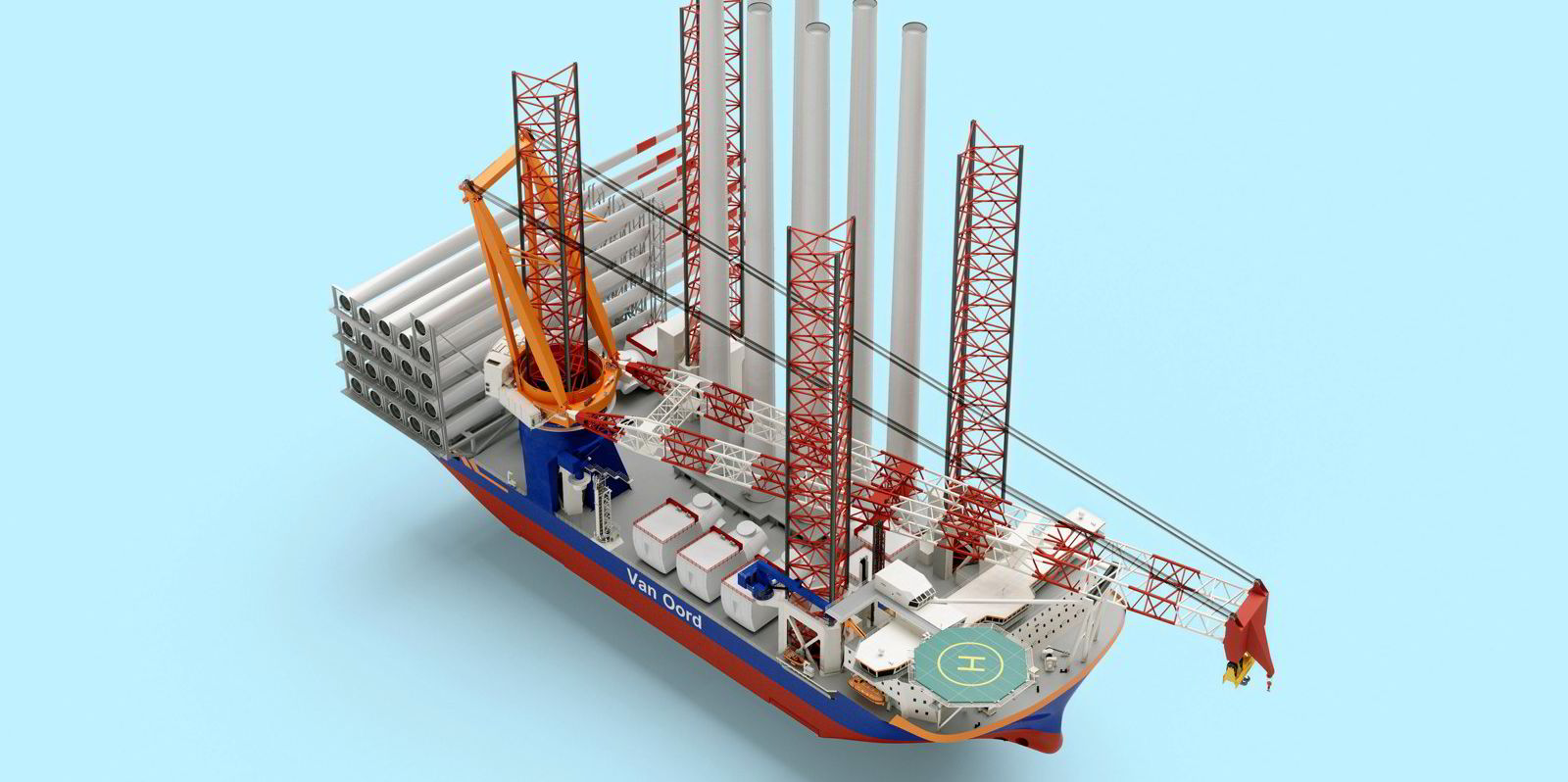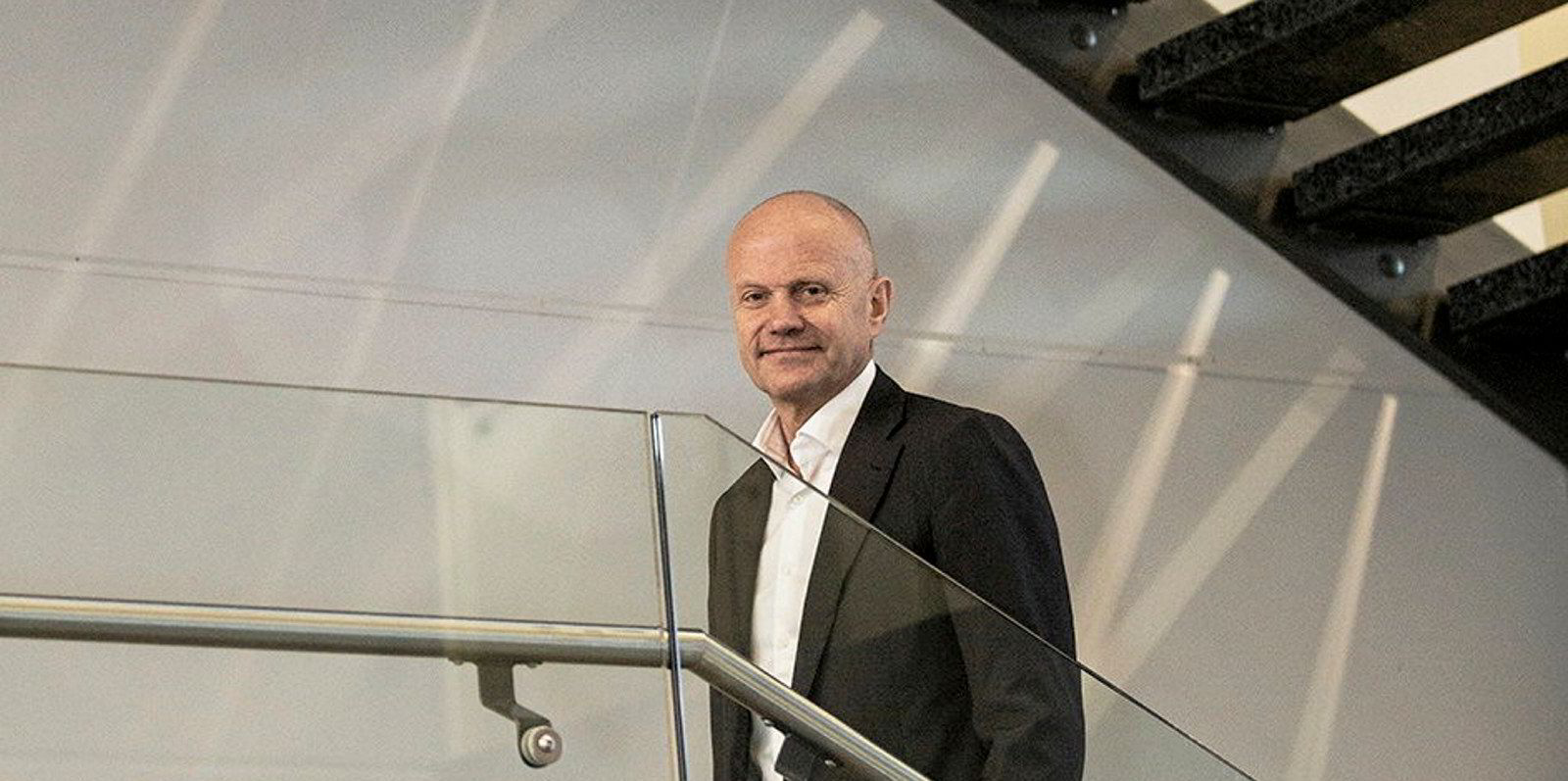Van Oord has ordered a methanol-fuelled wind turbine installation vessel in China, the company has confirmed.
The jack-up vessel has been contracted at Yantai CIMC Raffles Shipyard in China to a design developed by Knud E Hansen. Financial terms were not disclosed.
The newbuilding is expected to enter the market in 2024 and will work under the Dutch flag. The contract includes an option for a second vessel.
The investment is said to be part of a €1bn ($1.15bn) fleet investment programme over the next five years.
Van Oord said the investment was in line with the increasing global demand for offshore wind farms.
"Thanks to our experiences with the installation vessels Aeolus, MPI Resolution and MPI Adventure, we have a good grasp of working with jack-up installation vessels," Van Oord managing director of offshore wind Arnoud Kuis said.
"Now we are going one step further — the new ship will be the largest of its kind. Compared to the Aeolus, this new version has 88% more deck space and over 80% more lifting capacity."
Van Oord said it is committed to reducing CO2 emissions and to becoming carbon-neutral by 2050, and this investment is an example of the energy transition within the company.
"Marine fuels are becoming cleaner and, thanks to cleaner engines, emissions are reduced. Van Oord has already ordered three LNG-fuelled trailing suction hopper dredgers, which will be completed in 2022," the company said.

In addition to running on methanol, the newly ordered vessel will be equipped with an advanced active emissions control technology to reduce the NOx emission to an absolute minimum.
In addition, an installed 5,000 kWh battery pack can take the peak loads and regenerate energy to reduce the fuel consumption and corresponding emissions even further.
“To become carbon neutral by 2050, we look for new fuel technologies,” Van Oord director of ship management Jaap de Jong said.
“We see methanol, which reduces the ship’s CO2 footprint by more than 78%, as one of the alternatives to meet the industry’s goals to reduce its environmental impact.
“Similar steps have already been made in our investment programme with the construction of three LNG-fuelled trailing suction hopper dredgers and the ordering of a new green cable-laying vessel.”
Van Oord said the demand for offshore wind farms remains high with the European Union aiming to install 300 GW of offshore wind capacity by 2050.
In the Netherlands, the goal is to realise 20 GW up to 2030 and another 20 GW of offshore wind energy in the next decade.
Van Oord said wind turbines at sea are also rapidly getting bigger from just 2 MW in 2002 to turbines of 14 MW being installed today.
“The rotor blades are already well over a hundred metres long and the transport and installation requires larger ships. Van Oord is investing in a new vessel to transport and install the next generation of 20 MW wind turbines,” the company said.





